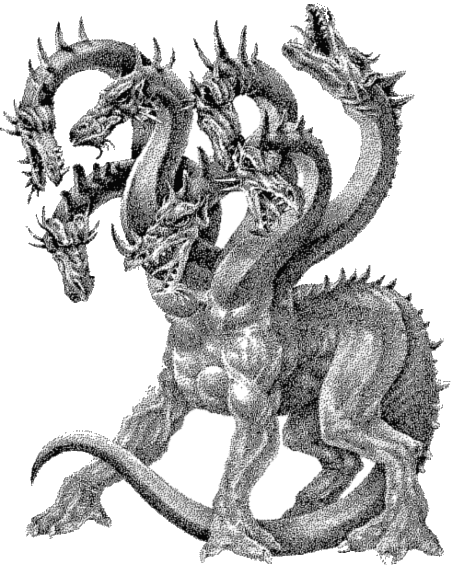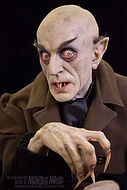Science of The Spirit
Systems Science, Naturalistic Spirituality,
and the Return of a Sacred Reality

The Science of Symbols
Scientific Mythology
Explore the New Science of Myth's Spiritual Symbolism
The Self-Organizing Networks of Systems Science are Myth’s Animating Spirits
-
Systems science provides evidence of a fundamental mystery in how Nature purposefully self-organizes
-
Mythic symbols of magic, souls, spirits, gods and goddesses are metaphors for that network agency
-
The different characters of these symbols indicate the archetypal behaviors of various types of systems
-
This symbolism has long assisted humans in perceiving animating agency in both society and Nature
-
These ancient metaphors can now help us comprehend the astonishing facts of systems science
Mythology Has Become Scientific
Network Science and Mythic Symbolism as Knowledge of "Spiritual Nature"
The science of complex adaptive systems and their self-organizing networks arises from challenging mathematics and is expressed in arcane abstract concepts. However, its essence is to specify what can be quantified and calculated about these systems so that their traits and influences can be better understood. Yet for this knowledge to be readily accessible to the average person, and to carry some emotionally compelling impact, it must be closely related to our more ordinary experience. That is done by careful association with our daily experiences of our selves, others, society, and the natural world. In this way, the scientific insight into the 'hidden workings' of complex systems offers us essential but normally obscured understanding of how Nature purposefully organizes its systems.
For pre-modern cultures that did not have such scientific methods, knowledge of Nature was just as essential. Humans have always depended upon close observation of their environments to enable their survival and continuing adaptation. This knowledge was encoded and preserved through traditional stories. But to represent the roles of network agency these tales necessarily relied upon symbolic metaphors. By associating these metaphors for the obscured activities of network agency with contemporary science, it becomes evident how much ancient people understood about the latter--even in the absence of our quantitative scientific analysis.
Consequently we can begin to appreciate how emotionally compelling "imaginations" of network agency once allowed humans to better perceive and understand the self-directed behaviors of natural systems. Now that their metaphoric symbolism has a scientific basis, they can once again be engaged as references to something very real--and extremely important to human understanding of "how the world actually works.' Most importantly, myth as knowledge of Nature is much more tangible than the abstractions of complex systems science. Admittedly, mythic symbols are not science. But by interpreting these symbols through the new science, they can be evaluated and appreciated for how they are useful expressions of the relevant science.
A Mythic World View "Sees" Network Agency as Spiritual Animation
The mythic symbolism of archaic cultures represents intentional action by non-human agency 'at work in the world.' Notions of souls, spirits, monsters, gods, and goddesses are found in mythologies of all pre-modern cultures. These are personifications of willful agents that influence 'how things happen'--agency that effectively animates bodies, species, forests, and even human relationships. Now, for the first time, this seemingly unrealistic symbolism can be interpreted from a new scientific perspective. Viewed through systems and network science, the magical actions and spiritual actors of gods and goddesses depicted in myth now can be understood as metaphors for the self-organizing thus self-animating activities of complex adaptive systems.
Archetypal Agency--Myth's Specific and Generalized Metaphors for Spiritual Agency
The definition of network agency as spiritual animation offered previously assists in understanding how mythic metaphors represent it.
Three aspects of spiritually animating network agency:
> General Animating Impulse
> Specific Animating Character of Types of Systems and Individual Examples
> Archetypal Patterns of Animating Character in Types of Systems and Individual Examples
The notion that there are noticeable patterns of system behaviors that indicate differing archetypal or origination characteristics is central to the mythic imagination. Close observation of both natural and human systems, of plant and animal species as well as human societies, gave archaic people a basis for characterizing their behaviors in archetypal symbols, concepts, and stories. These are not scientific descriptions but imaginal expressions of intuited sensings of the 'hidden dynamics' that shape the world through network agency.
Mythical metaphors for the animating agency of networks are found in all pre-modern cultures. Such imaginal figures are considered to be "archetypal" in that they suggest elemental or originating traits of 'how things happen' or how aspects of the world 'behave.' Thus mythical metaphors enabled humans to differentiate modes of network agency in terms of the characteristic behaviors and influence of 'spiritual animators.' This characterization provides a tangible awareness of how particular types of feedback networks organized and shape aspects of the world around us. This imagination of network agency is a means for "seeing the invisible realm" of its "black box" creativity. These representations are of at least two basic types: iconic images and personified agents.
General Iconic Mythic Symbols: The most generalized is a kind of schematic icon or abstract image that suggests the interdependent interactivity of feedback networks from which self-organization, thus self-animation, arise--as revealed by systems science.

Specific Personified Symbols of Spiritual Animation: A second type of metaphor is a personified figure or 'spiritual actor' depicted as having particular traits of character and behavior. These are found in more specific and more generally abstract forms. The most specific are the spirits or souls of particular systems, such as animal species, like wolves or elephants. Beavers are thusly imagined to have 'beaver spirit.' A particular individual system, such as a given beaver, is animated by the character of this spirit but also has more individualized traits, just like a particular human being. This sort of specific personification is applied to earth systems as well. 'The Wind' might be represented by a general personification or also as multiple characters representing the North Wind versus the West Wind. Many local ecological systems, such as rivers and forests, were similarly personified as having their own 'personalities' or 'indigenous spirits,' these have been termed divas, faireys, elves, and dwarves.


More Generalized Personifications of Spiritual Animation: Then there are more abstractly generalized personifications of network agency. These are more associated with terms such as gods, goddesses, and monsters. In this type a distinctive personality is associated to a certain aspect of the world and 'how things happen' in regard to it. Thus there are gods of war and goddesses of love. For the ancient Greeks, wild Nature was generally animated by the agency of the half human, half goat bodied god Pan.
The archetypal character of wild Nature's self-animation is made 'visible' as the personality of the god Pan:

Personification by Mythical Beasts, Monsters, Demons, Etc.: A further mode of personifying archetypal traits of network agency employs creaturely figures whose appearances are not entirely like humans or other animals. These are overtly unrealistic in some regard, indicating they are not literal ordinary life forms but rather something that is typically 'unseen,' yet has spiritual powers to influence the ordinarily 'visible' world. This sort of personification of network agency has survived more broadlly in modern culture than depictions of human-like gods and goddesses.
Mythical creatures 'embody' characteristic agency 'at work in the world':



Archetypal Agency in Action: Tales of How Spiritual Animators Shape The World
Essential to how mythic symbolism 'makes manifest' the obscured operations of network agency is narrative. The archetypal traits of how different types of system networks act to create, maintain, and change the world are revealed in stories of their exploits. These stories typically involve encounters between two or more mythic figures or human engagement with them.
Encounters between spirits or gods, and these with humans, elaborate different types of network behavior:



Interpreting Mythic Symbols through Systems Science
Examples of how myth's spiritual symbolism can be interpreted through systems science are provided on the pages listed in the top menu bar item "Science of Symbols"--accessed through the link below.